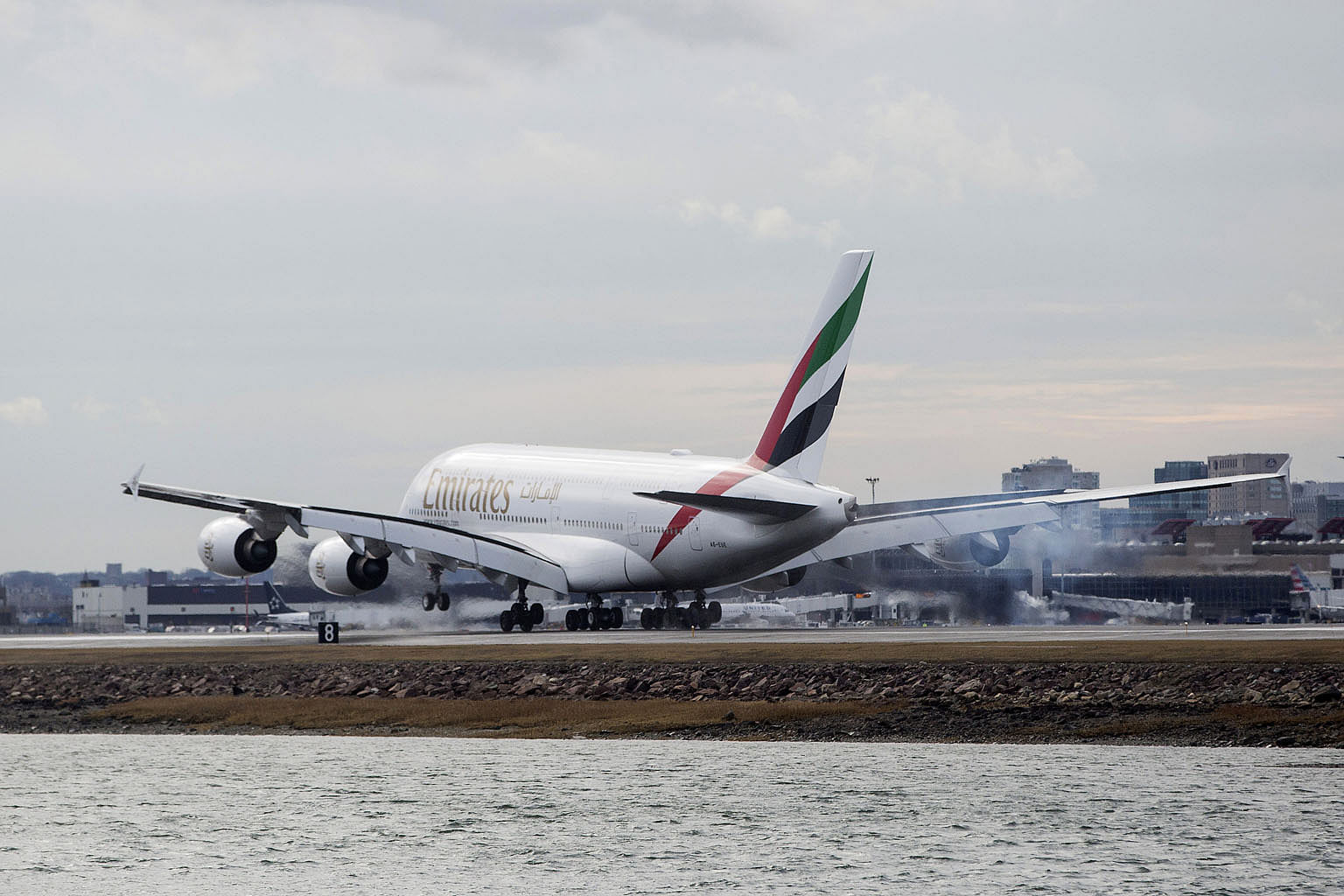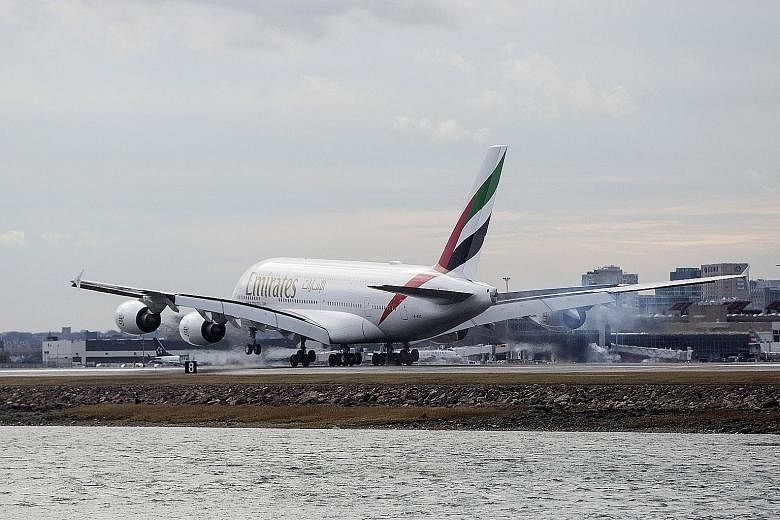After a fast climb, Emirates, Qatar Airways and Etihad Airways - dubbed "super connectors" for their significant transit traffic - have hit some turbulence.
Dubai-based Emirates, the biggest of the three, saw year-on-year profits for the six months to the end of September nosedive by 75 per cent to 786 million dirhams (S$302 million) - after more than four years of solid growth.
The numbers are less gloomy for Qatar and Abu Dhabi's Etihad, but the headwinds are just as strong.
Emirates and Qatar are expected to record their slowest capacity growth this year, in at least five years.
For the first time, Etihad will cut capacity - the number of seats offered multiplied by total distance flown - reports industry think-tank Centre for Aviation.
The developments beg the question: Is this the start of the fall of the Middle Eastern airlines and how will that impact other global carriers such as Singapore Airlines (SIA)?
Asked what ails his carrier, the chief of one of the fastest-growing airlines in the world said - a tad ironically - that the skies are getting crowded. The industry is extremely competitive, said Emirates president Tim Clark.

This has prompted some governments to turn protectionist to protect domestic carriers, when, in fact, competition and international air connectivity will result in job creation and economic benefits.
For years, carriers - the European airlines being the most vocal - have slammed Emirates, Qatar and Etihad for "dumping" capacity. Aggressive expansion by these carriers has created an oversupply of seats which has forced fares down and, in turn, profits and yields for many airlines, including SIA.
Flush with cash, the Middle Eastern carriers have enjoyed growing market share and profitability, until now.
Falling oil prices since 2014 have dampened the trading landscape. That has affected the global oil and gas industry and economies in the Middle East, softening the demand for corporate travel. The strength of the United States dollar against major global currencies has also impacted revenues for Emirates, for instance.
The Centre for Aviation's Will Horton said that while all airlines have been impacted by the slowdown in corporate travel, more unique to the Gulf carriers is the downturn in their point-to-point business following the collapse in oil prices.
"Point-to-point traffic at Gulf airlines is around 10 to 30 per cent. While that may seem small, the value was very high," he said.
It is cheaper, for example, to buy a Hong Kong-Europe than Hong Kong-Dubai/Abu Dhabi/Doha ticket despite the huge difference in distance.
There are two schools of thought when it comes to the future of the Middle Eastern giants.
No doubt they feel the pinch from more robust competition from other carriers, but this does not spell doom, said Mr Saj Ahmad, chief consultant at StrategicAero Research . "A better indicator of hitting a peak would be either slower organic growth or a move to curtail deliveries of new jets to rein in capacity. Neither of these two are happening yet," he said.
This year, Emirates will still take delivery of more than 20 new aircraft, including Airbus 380s and Boeing 777s. By the end of the year, the airline will have more than 100 A-380s in its fleet.
While Etihad will shrink this year, Qatar continues to expand. Last year, it added 14 new destinations to its network and 19 new aircraft to its fleet, taking the count to 192. The airline is also preparing to launch a new business-class seat next month.
Endau Analytics' Shukor Yusof has a conflicting view. "The growth that we have seen at Emirates over the years is not sustainable. There will come a point when their A-380s will hamper progress, instead of supporting growth," he said.
Within three to five years, a huge fleet of A-380s could put the airline at risk, financially and operationally. Despite a grand debut a decade ago in SIA colours, the four-engined A-380 is not popular with many airlines that are unable to fill the huge plane in order to reap its operating benefits.
For SIA, Cathay Pacific and other international carriers, a slowdown in the Middle East market is certainly good news if overall capacity falls. Still, challenges remain.
On Tuesday, SIA reported a 35.6 per cent drop in profits for the three months from October to December. At the operating level, it was slightly better, with profits up 1.7 per cent. The future will be challenging for SIA amid tepid global economic conditions and geopolitical concerns, as well as aggressive pricing by competitors.
Loads and yields for the passenger and cargo businesses are seen to remain under pressure. On the plus side, an expanding, fuel-efficient Airbus 350 fleet will help SIA grow with better operating economics. The airline has ordered 67 of the planes, which started arriving last year.
Integration between Scoot and Tigerair will continue as SIA moves to position the group to capture a bigger share of the budget travel market for short- and long-haul flights.
Even with the slowdown in the Middle East, Emirates, Qatar and Etihad will continue to be formidable foes. New challenges will also come from Chinese carriers that have been growing aggressively in recent years.
To stay a key player, SIA will have to work harder to improve its operating margins and seek new opportunities in existing and new markets.
Equally, if not more important, the airline must listen to its customers and tailor its products and services accordingly, and keep staff happy so that they can continue to provide the quality service that SIA has built its reputation on.


